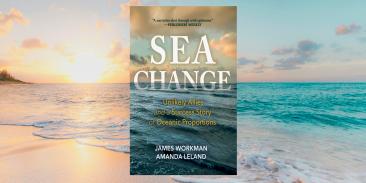3 actions the government can take today to lessen the damage of future floods
By Shannon Cunniff
Another devastating hurricane, another bill for American taxpayers: The tally from Hurricane Florence may go as high as $22 billion, according to Moody's, placing it in the top 10 category for damages.
We can either continue down this path, or make a collective reevaluation of how we manage risk. It means we must revisit the myriad of local, state and federal laws and policies that guide how we cope with storms in our changing climate. And it means we must challenge long-held assumptions.
The time may be just right. Congress just passed a bipartisan bill to reform the Federal Emergency Management Agency that includes funding to help communities better prepare for disaster. It signals that lawmakers on both sides of the aisle are open to solutions.
Here are three initial, common-sense and nonpartisan actions the Trump administration and Congress can take to strengthen America's resilience against floods, which kill more Americans than any other disaster and cost us billions annually. All are doable and necessary.
1. Make FEMA's flood maps accurate
Let's start with the maps. FEMA's maps are developed to establish annual flood insurance rates for properties, but are also used to guide local decisions on development.
Unfortunately, the agency's maps today fail to capture the true extent of river, rainfall and storm flooding, a recent report found. In particular, they miss risks associated with smaller streams, which are often where development of residential and commercial properties occurs.
Plus, the maps are based on historic events and the past is no longer a good forecaster of future conditions in our rapidly changing climate. Making things worse, they're not updated frequently enough to reflect the effects of recent extreme weather.
This means FEMA's maps woefully underestimate the number of Americans who are exposed to a "100-year flood event" – which actually has about a 26-percent probability of occurring during a 30-year mortgage.
Privatizing flood mapping may be a solution if federal standards can establish that findings are readily available, methods transparent, updates occur far more rapidly and localized map revisions are possible. Either way, nobody can argue against the fact that we need better maps to guide development.
2. Reward states that reduce risks
Higher standards for siting, designing and constructing projects reduce risks of loss of life and property from floods and represent an important step in proactively managing increasing flood risks associated with more intense storms and sea level rise.
On one hand, FEMA recognizes higher state standards as a method to reduce risk and rewards areas with better standards with discounts to flood insurance premiums. When the federal government is sharing the cost of a project with a local sponsor, however, that sponsor has to pay any additional costs for building the project to their higher flood risk management standards.
This sends the wrong message and is a problem that can easily be fixed. The federal government can share the costs of superior local requirements, a solution that should appeal to members of both parties.
3. Emphasize risk reduction benefits
Recovery spending should emphasize actions that help communities become more resilient to future floods. Greater funding is needed for FEMA's Hazard Mitigation Grant Program, for example. It helps communities prevent flood vulnerabilities such as undersized culverts, and to elevate buildings to reduce flood damage.
Far more could be done to look at how other federal decisions can mitigate flooding. The White House Council on Environmental Quality could organize such an effort.
Federal agencies can also look at protection and restoration of habitats that lessen the impacts of floods. Healthy forests absorb rainfall and slow its flow into streams, wetlands lower flood heights and velocity, and dunes provide protective barriers to waves.
Through wetland loss, the Houston area lost roughly 4 billion gallons worth of flood retention. If North Carolina [PDF] had not lost about half of its wetlands, flooding from Hurricane Florence would probably have been less damaging in some areas.
The risk reduction benefits provided by habitats should be formally recognized in federal policy, while policies that erode protection of wetlands and floodplains should be reconsidered.
Water respects no political boundaries, and given the expanding landscape of flood risk, every agency needs to step up and find solutions that preserve floodplain functions and protect our economy and citizens.
Is it doable? Most certainly. Can it be bipartisan? You bet.










